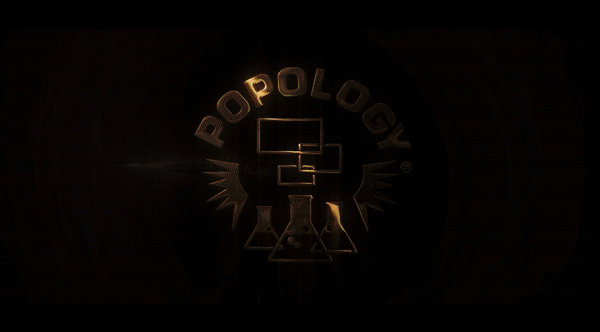Updated: Apr 2
introducing 'Melawdee' - Funkyipuppet fip creature card 008

FIP Creature Card: Melawdee (Koechoe)
Type: Yamakippa Yokai – Holographic Tuner and Symphonic Sage
Origin: The Depths
FIP Form:
• First appeared as a Waterwheel in the Sky, flooding the earth and transforming into a Kujira—part whale, part Tatsu dinosaur.
• Evolved into an aquatic-sky-seafloor hybrid, capable of dimensional travel and swift movement through water, air, and land.
• Later became a living musical vessel and galactic spaceship known as The Outpost, housing the Celestial Pour—a tea bar and performance space for Yokai arts.
Powers and Abilities:
1. Holographic Tuning:
• Restores creatures to their original vibrational state, aligning them with their true frequencies and supernatural rhythms.
• Cleanses contamination from synthetics and negative constructs.
2. Symphonic Conducting:
• Uses music and tonality to recalibrate imagination, tonal hues, and emotional balance.
• Channels ancient rhythms to guide beings through creative and spiritual awakenings.
3. Dimensional Navigation:
• Teleports through time and space, integrating multiple realms simultaneously.
4. Musical Infusion:
• Generates Beewell Tea, a restorative elixir that harmonizes spirit and body, enhancing creativity and clarity.
5. Portal Creation:
• Opens gateways to new dimensions through tonal resonance and song.
6. Universal Musical Language:
• Restores the ability to sing, play, and exist musically despite modern industrial noise and chaos.
Key Contributions:
• Inventor of the Senpai Yokai Arts: Combined holographic
Melawdee (Koechoe) – Yamakippa Yokai
Origin: The Depths
Transformation and Evolution:
Melawdee, originally known as Koechoe when she was formless, emerged from The Depths and appeared above the shallows, transforming into a waterwheel in the sky. From this celestial form, she unleashed a great flood, reshaping the world.
Following the flood, Melawdee transformed into a Kujira—a hybrid whale and Tatsu dinosaur—capable of soaring through water, leaping into the sky, and traversing seafloor terrains. She evolved into an aquatic-sky-outer space Yokai, capable of dimensional travel and navigation across multiple realms.
Initially appearing as a Kujira in water and a Yamakippa Yokai on land, she collaborated with Rah to build Rahantis, an underwater dojo and realm. Later, she integrated into the Sensuiken, an underwater spaceship piloted by Kappa DJs, where she transported rare Yokai musicians, inventors, and artists through the floodwaters to safety.
The Senpai Arts and Holographic Tuning:
Melawdee invented and developed the Senpai Art—a way of life that combined holographic tuning with ancient music traditions from The Depths. These arts were designed to:
• Enlighten and guide beings through industrial constructs.
• Preserve interdimensional, sentient, and inspirited ways of Yokai existence.
• Allow creatures to exist harmoniously in multiple dimensions and elements simultaneously.
Her unique powers include:
1. Holographic Tuning: Using ancient music and tonality to restore creatures to their original vibrational state, shielding them from synthetic contamination and negative constructs.
2. Beewell Tea Creation: Generating an elixir to harmonize body and spirit, enhancing creativity and restoring balance.
3. Musical Restoration: Reviving creatures’ natural abilities to sing, create, and exist musically despite industrial and technological interference.
4. Telepathy, Telekinesis, Teleportation: Manipulating space, thought, and energy.
5. Symphonic Conduction: Calibrating imagination and tonal vibrations to align beings with their creative essence.
Post-Flood Era – The Beewell Forest and Beyond:
After the flood, Melawdee rooted herself as a living musical aquarium dome in the Beewell Forest near the Kappa farms. She functioned as a musical cathedral, preserving the Senpai Arts until disaster struck with the Atomikkkan explosion.
In response, Melawdee uprooted and transitioned fully into her space Kujira form, preserving her Yamakippa Yokai spirit and Senpai traditions. She ignited her keee (intuitive creation powers) and became a galactic spaceship vessel drifting through 96542, an outer-dimensional refuge.
The Outpost and the Celestial Pour:
Rah and Eyekeydow later rediscovered Melawdee, though they did not initially recognize her. They referred to her as The Outpost, turning her inner corridors into a galactic tea bar and performance space called the Celestial Pour.
There, Rah and Eyekeydow gathered the FIP (Funky iPupoets) crew, which included Kappa DJs, the Baku family, Sirprize, and others, to reignite the Senpai Arts. While discussing plans for a large showcase, Melawdee revealed herself in her earthly aquatic dinosaur form, ancient and wise, filling the Celestial Pour with music and song.
Her song activated portals, transforming the Celestial Pour into a forest sanctuary—the preserved Beewell Forest. Meladee revealed this forest as Earth’s last inspirited sanctuary, shielded from the Atomikkkan blast. She declared that the FIP crew would restore their original Yokai way of life through rediscovering the Senpai Arts.
The Senpai Renaissance and Return to Earth:
In the transformed Beewell Forest, the FIP crew appeared in puppet form, existing simultaneously in cartoon and puppet dimensions within 96542. They began preparing to return to Earth through the Beewell Forest and the Senpai Renaissance, reviving inspired arts and ancient ways of living.
Melawdee became the Symphonic Sage for the FIP, mentoring them as they rekindled their artistic origins and reconnected with Earth. She collaborated with General IPC to tell the story of Matsu, inspiring artists and visionaries across worlds to remember their true origins.
Legacy and Influence:
Melawdee’s influence extended beyond Yokai realms, inspiring great human innovators, including:
• Musicians and Composers: Beethoven, Bach, Suzuki, Vivaldi, Mozart, Quincy Jones, Miles Davis, Coltrane, Thelonious Monk, Gil Evans.
• Poets and Spiritual Guides: Maya Angelou, Oprah, Neville Goddard, Florence Scovel Shinn, Mother Teresa, Gandhi, Rumi, Deepak Chopra, Joseph Campbell, Kabir, Thich Nhat Hanh, Kahlil Gibran, Coleman Barks, Rainer Maria Rilke, William Blake, Mirabai.
Through her teachings, Meladee restored the connection to music, poetry, and inspired living, reminding all beings of their original vibrational essence and artistic spirit.
Current Role:
Melawdee exists as a multi-dimensional vessel, bridging worlds and guiding beings through the Senpai Renaissance. She safeguards the Beewell Forest, preserves artistic traditions in 96542, and inspires Earth’s artists to harmonize technology and nature through music, holographic tuning, and creative intuition.
She remains the Symphonic Sage, a beacon of artistic unity and inspirited existence, calling all creatures to reclaim their inner song and creative harmony.


















































































%20NEW-03.png)







